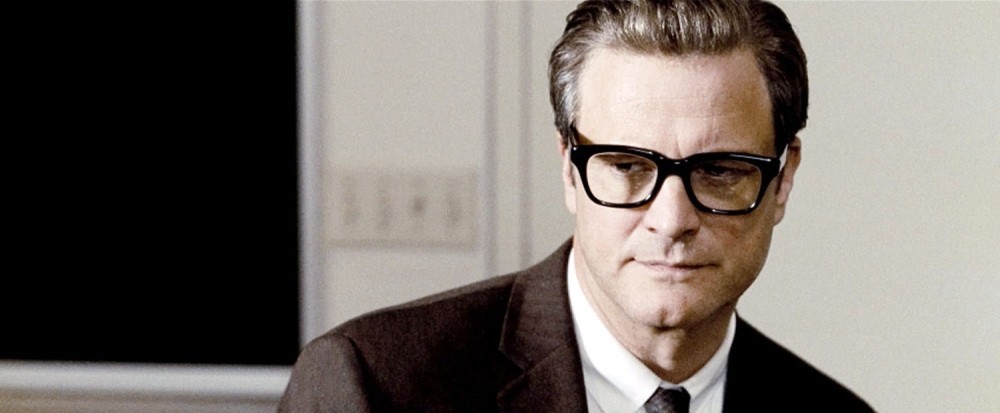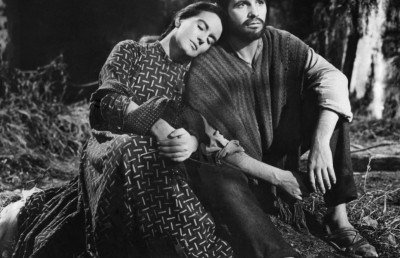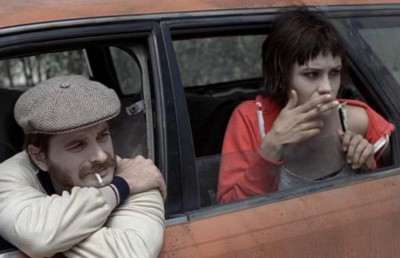Death, Despair, and Dreams: Tom Ford’s film interpretation of Christopher Isherwood’s book A Single Man
Bright Colors, Questionable Impressions

I read several of Christopher Isherwood’s novels many years ago and what I admired them for was a fundamental intelligence and integrity. Christopher Isherwood, a twentieth-century British novelist, wrote about many of the things that concerned other people, other writers—war and wealth, love and sex, among them—but did so in a way that accepted and respected human nature. There was something nearly documentary about his work. Christopher Isherwood might register exasperation or disappointment, but he did not indulge contempt or hatred. I thought he was great, but I could understand why others might think him a minor rather than major writer: he did not genuflect before the usual ideals and idols; and writers are often judged—whether we admit it or not—by their ability to carry the standards of the tribe with imagination and vigor. Christopher Isherwood began where other writers ended: with an understanding of what was of genuine importance in the world. Isherwood often wrote about people who were trying to create a private life that gratified private concerns—not a desire for material wealth or social prominence, but a desire for friendship, love, and spiritual wholeness. In giving us a film of A Single Man, Tom Ford has presented a work that captures the emotion, intelligence, and sensuality of Christopher Isherwood’s sensibility, but he has also giving us something else, and possibly something less. The film is so lean and precise that one does not sense the mystery that Isherwood was always chasing.
Tom Ford’s film A Single Man focuses on George, a literature professor, following the death of George’s life partner Jim, and George’s ongoing relationship with Charlotte, his glamorous friend, and George’s new acquaintance, Kenny, one of George’s students. It was adapted from Christopher Isherwood’s novel A Single Man by the writers Tom Ford and David Scearce, with production designer Dan Bishop, cinematographer Eduard Grau, editor Joan Sobel, and composers Abel Korzeniowski and Shigeru Umebayashi. The film opens with dream images of George (Colin Firth) sinking into water, and of Jim (Matthew Goode) lying bloodied in the snow next to a wrecked car; and George wakes up, stunned by his solitude and grief. It has been about eight months since the death of Jim, George’s lover of sixteen years. It was Jim’s cousin who called to tell George about Jim’s fatal car accident while visiting the family in Denver—Jim’s parents would not do it—and the look on George’s face seems to be that of sadness, bewilderment, pride, fierce judgment, and loss. George describes himself as having a broken heart; and we see he has a pain in his chest. George has to prepare himself for his day—showering, shaving, and taking aspirins—and as he readies his suit and shirt, it is like seeing the creation of a performance. George is aware that he is playing himself, a respectable man, but on this day, when he is considering ending his life, both his appreciation for the world and his despair begin to leak through his image; and he makes contact with people in ways that he usually does not.
It is the early 1960s. After seeing and driving pass the neighbors and their own domestic practices (affection and tension between the mother and father, and the noise-making and pantomimed aggression of the children), George encounters a colleague who wants to talk to him about Cuba and the threat of war and the practicality of building a bomb shelter. It was a time when talking about surviving nuclear war made sense to people, one of those examples of how insane “normality” can be. George’s colleague, played by a determined Lee Pace (his determination borders on the comic), says that there will be no time for sentiment when the bombs fall; and George says he does not want to live in a world without sentiment. That is quickly, directly, and even casually said, but, of course it has a deeper resonance: George does not want to live in a world without Jim—but, also, he does not want to live in a world that is only about appearances or practicality or money or status, but this last meaning does not sound loudly enough.
George discusses an Aldous Huxley book (After Many a Summer) with his class, and makes comments about the uses of fear of the other in society, and after class one of his students, Kenny, approaches George to talk further. Kenny (Nicholas Hoult) is a slim, blond, blue-eyed boy in a pretty sweater and white jeans with black sunglasses and a motorcycle, and a beautiful girl as a constant companion (she looks like Bardot); he is a figure of possibilities, a mix of social signs. Kenny and George talk about fear and drugs and Kenny makes a reference to thinking of George as spiritual, but George does not address that supposition. It as if a door that might have been opened is being pointed to but passed.
In the center of the film is George’s dinner with his friend Charlotte (Julianne Moore). “I’m dying for a dose of you,” she had told him that morning when she called; and we see her putting on her own face, one side her face clean of make-up and the other side painted (there is a moment when she is distorted in the mirror, and there is the suggestion of the grotesque). Charlotte and George have been friends for a long time, and became lovers, briefly, when they were young; and now, her husband and child have left her and his lover has died, and they comfort each other. She calls him “old man,” and he calls her “kiddo.” Charlotte, as had George’s housekeeper and one of his colleagues, tells him that he does not look well; and he says he has had trouble sleeping—and she mentions the loss of Jim as a possible cause of his disturbance. (George had recalled earlier that when he and Jim were at home reading and listening to music, comfortable, happy, Jim was so satisfied that he had said that if he died now it would be okay—but George responded that it would not be okay with him. It was a death George was not prepared for, and has not accepted.) Charlotte and George have drinks and dinner and more drinks and dance; and it is obvious that they both have been using alcohol to sooth anxiety and pain. She speaks of the life they might have had together if he had chosen to have a “real” relationship, one with a woman rather than a man, with her, something that enrages him, for the basic lack of acceptance of the facts of his life and love. It is an interesting chapter in the film—she is a desirable woman, though she does not now have the social value she once had, and he is a professional man, and each is worldly in a particular way, but their friendship is about the honesty and joy they share. Their friendship is private, and an achievement, but they cannot give to the other what he or she most wants or needs.
George goes home, and, while still considering suicide, he wants more to drink; and he goes out for a bottle and his student Kenny follows him, and they talk (Kenny comments about birth and death, and being limited by one’s body and perspective), and they swim, and go back to George’s house. Kenny is admiring and attentive, and seems available to George in whatever way George might want. It is fascinating to see that availability presented so simply, nakedly but without vulgarity.
It is important to consider Tom Ford’s accomplishment: he has put things that are often buried, and deep, right up on the surface. The characters speak of significant experiences and facts, of fear and loneliness, and even tell the truth. It is impossible to misunderstand what anyone means, whether they are speaking or silent. It is left to the individual viewer to decide whether the film has true depth or lacks it. I am of two minds about this. It is a great relief to have attractive, intelligent characters who actually talk about things that matter, who reveal themselves. Yet, in life, there is often more than we can know or say, elements beyond us; and I am not sure that those elements are suggested adequately. We are confined to what these characters know and say.
Has George tried to meet other men? Does he have other friends? Has he considered therapy, which was so popular then? What kind of education has Charlotte had? Has she ever worked? Does she have interest in any kind of work? Who are her friends, and has she met other men she has liked? Has Kenny been attracted to a man or boy before?
Where does the social self end and the spiritual self begin?
Christopher Isherwood was committed to exploring the spiritual. A man who had been educated at Cambridge, knew writers such as Wystan Hugh Auden and Stephen Spender, and lived in Berlin before moving to America, he was a sophisticated man. He published Goodbye to Berlin (The Berlin Stories), which became the play I Am a Camera and then the musical film Cabaret; and he published in the 1960s the novels Down There on a Visit and A Meeting by the River, two books that were long personal favorites of mine. Isherwood studied a form of the ancient eastern Indian Hindu religion, called Vedanta; a religion concerned with the relationship of pure being to the individual self, and founded on the ideas in the Aranyakas and Upanishads, two treatises, and which inspired the Mahabharata and the Ramayana, two epic poems. According to Vedanta, the ignorant person is confined to the world of things, and feels alone in that world. Ignorance prevents seeing the connection of each to all; and knowledge allows perception and acceptance of shared connections, and, finally, recognition of pure being.
It is arguable that in A Single Man George and Charlotte are too restricted to the world of things, too restricted—as Kenny thinks he himself and most people are—to individual perspective; and that the film in which they exist is as restricted. It is also arguable, from another direction, that the film is an allegory of the experience of solitude and connection—that the limits of solitude are shown and the possibility of connection illuminated.
Of course, films do not only speak through people, through their characters. Tom Ford’s film contrasts dullness with bright color to demonstrate George’s disinterest and attention. George walks into a world drained of color, and as he finds something to appreciate—a face, someone’s eyes, lipstick, a dress, a man’s torso—that thing suddenly is seen in all its beauty. The world becomes alive for George, as he contemplates death. It is the surface of the world that George sees and appreciates, not the spirit beneath. Is the surface to be taken as evidence of the spirit? Is the surface all there is? Is there any spirit within?
George tells Kenny that his most important moments have been those in which he has connected with other people; and he recalls the events of his day, and that remembrance gives him something—acceptance, pleasure.
Oddly, though understandably, Tom Ford’s A Single Man ends with a kind of closure that seems too perfect: George contemplates his night and day, sees an owl and the moon, and has a clarity of feeling, and an understanding comes to George of life; and because of how the story has been told—full of little appreciations and revelations—we can forget that Isherwood and his characters were involved in a spiritual search that was about more than recognition that ordinary life has its value. (Interviewed in connection with the film, Tom Ford has said the little things are important, are all that there is. It is the kind of thought that seems admirable coming from a rich man, someone associated with the high life—but it won’t do: if ordinary life were enough, there would be no need for art or social activism, among other things.) Isherwood thought that there was something beyond ordinary life, and the film does not remind us of that—does not suggest what that might be. Of course, George and Jim are united by death, but we are all united by death, if not in death; and the question is, Is there more than life and death? Does life have a purpose beyond what we give it? Or is life’s only purpose the one we give it?
Yet, it must be stated: Tom Ford’s A Single Man is a truly, truly remarkable film, and it can withstand multiple viewings without loss of appeal or intensity. It is an adult film—and adult not simply in its engagement of the subject of sexuality, but adult in its acceptance of the realities of life. The characters may want their fears or pains soothed, but the film does not offer false consolation. It presents beauty and intelligence, the resource of friendship and the memory of love. It is a cool film with a warm and stricken but hopeful heart.
It may be strange, but another film that came into the world around the same time as A Single Man, Jon Amiel’s film Creation, is a work that focuses on the life and writing of the English scientist Charles Darwin, a Cambridge graduate, the man who was reputed to have killed “God,” and it is a film that actually uses the supernatural as part of its storytelling. Charles Darwin’s Origin of Species, in which he discussed his theory of evolution and the struggle for survival in nature, had a long gestation. A naturalist, Charles Darwin was part of the crew on a ship, the Beagle, as it made its way around the globe, a trip that through which he made useful observations, some of which he published. Darwin thought that religion had a practical use—that the common beliefs and morality it provided united society—and his wife was devoutly religious. He hesitated to go against religious belief, though science—in fact and reason—challenged some of religion’s principal tenets. With the death of Darwin’s young daughter, a favorite child, he was deeply troubled and the last remnants of his own religious belief seemed to have left him. Yet, the film Creation uses the return of Darwin’s daughter, a challenging and charming ghost, as a constant in his life and mind. The belief in divinity may be challenged but there is the acceptance of a spirit world—and not simply spirit as energy or memory, but as a perceptible bodied presence.
The film drama is intelligent, and Paul Bettany as Charles Darwin and Jennifer Connelly as his wife perform the lead roles with a matching intuitive intelligence and considered feeling. They are an amusing, loving couple in youth, and after their child dies Darwin is sickly and withdrawn and his wife the attentive, responsible parent; and at one point they argue about the distance between them, but they respect as well as love each other. Creation is, of course, dramatized history, a costume picture, and has the elegance and formality that might be expected. The sensitive performances help, but, it is true that the magical realism and elements of the exotic—the ghost and the fantastic dreams, but also the recounting of encounters with foreign cultures and the actual documentary (time-lapse) photography of plant and animal life that is speeded up to show aspects of change—create a dynamic that energizes the film. Yet, I watched the film and wondered: Should there be a spiritual world in an exploration of scientist Charles Darwin and his work? The use of a ghost is obviously sentimental; and could be seen as a subversion of the reason that Darwin represents. Human consciousness often goes beyond expectation and reason, and films express that: and while one film accepts the facts of human existence as enough to rejuvenate the human spirit, another finds the memory, the imagined or perceived presence, of a dead child as balm.













